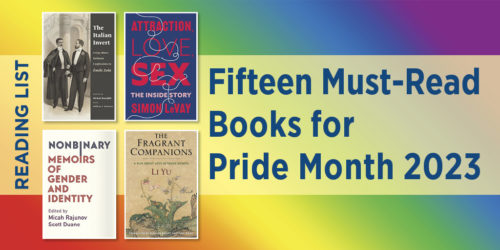An Interview with Emanuel Levy, author of "Gay Directors, Gay Films?"
The following is an interview with Emanuel Levy, author of Gay Directors, Gay Films?: Pedro Almodóvar, Terence Davies, Todd Haynes, Gus Van Sant, John Waters
Question: What was your motivation for writing this book?
Emanuel Levy: The notion that a distinctly gay gaze and a distinctly gay sensibility are reflected in the work of openly gay directors has not been thoroughly explored in the fields of cinema studies. Gay Directors, Gay Films? deals with one central issue: the effects of sexual orientation on the career, film output, and sensibility of five homosexual directors: Pedro Almodóvar, Terence Davies, Todd Haynes, Gus Van Sant, and John Waters. I wanted to show that these directors have perceived their sexual identities as outsiders in complex and varied ways, that the impact of sexual orientation may differ from one director to another and from one phase to another within the career of the same director.
Q: Please explain the book’s title and the question mark at the end?
EL: The book centers on five openly gay directors and their work, from the first film to the present. It raises a series of interesting, not easily answerable questions. Is there a distinctly gay mode of looking—gay gaze as it were—at social reality, at sexual politics? Do gay directors make specifically gay-themed films that are targeted at mostly gay audiences? How do we define a film as gay? By its explicit contents (text) and/or by its implicit meanings (subtext)? If a film contains one gay character, surrounded by straight figures, and does not deal with the standard issue of coming out (very popular in films of the 1980s and 1990s). These are some of the intriguing questions, which are theoretically-infused an and have pragmatic implications, that have guided me in this book, and are still at the center of film, feminist, and gay and queer studies.
Q: What was the perspective guiding your research and writing?
EL: I chose a comparative socio-cultural perspective, namely, placing these directors, their films, and their careers in the sociopolitical, ideological, and economic settings in which they have lived and worked. The five directors share two things in common, sexual orientation (they are all openly gay) and biological age, all five directors were born after World War II and thus belong to the same age cohort. At 69, Davies is the oldest, and Haynes, 53, is the youngest. In between, there are Van Sant, 62; Almodóvar, 65; and Waters, 68.
Q: Why did you choose these, and not other, directors?
EL: I wanted to examine the impact of national identity and indigenous culture on the film oeuvre of these directors, three of whom are American (Waters, Van Sant, and Haynes) and two European (Almodóvar (Spanish) and Davies(British)). Originally, the book proposal also included the gifted French director, Francois Ozon (Swimming Pool, 8 Women), but the scope of the research and space consideration (the book’s length) have presented some constraints.
Q: Do you consider the book to be pioneering?
EL: Surprisingly, most film books have centered on a particular genre, or individual directors, but there are not many books that compare and contrast five vastly different directors. The book aims to offer fresh look at filmmakers, who have been inventive pioneers themselves in tackling controversial issues and taboos. Early reviews of my book have pointed out that it is original and cannot be compared to any other film book. That’s a huge compliment to me, and hopefully my book meets this challenge, or fits this description.
Q: Why did you decide to follow each director’s career chronologically?
EL: I follow each director from the very beginning of his career (after graduating from film school, often making shorts) and describe each and every film they have made up to the present. The book offers readers a broader context within which they can place an individual director and a particular film. I don’t know of any books that have dealt with the significant questions of how directors choose their subject matter, the various influences (filmic, intellectual, literary) on their pictures, the ease with which they move from one feature to the next, the evolution of their filmic sensibility, and the consistency of their visual style. Do their careers follow a linear model of evolution, Do they show ups and downs (and ups)? Are their careers defined by repetition and refinement of similar narrative strategies and stylistic devices and/or by innovation. Todd Haynes, for example, is an auteur thematically (dealing with recurrent issues, themes, and characters that are mostly female), but each one of his six features is vastly different stylistically, using innovative visual devices.




